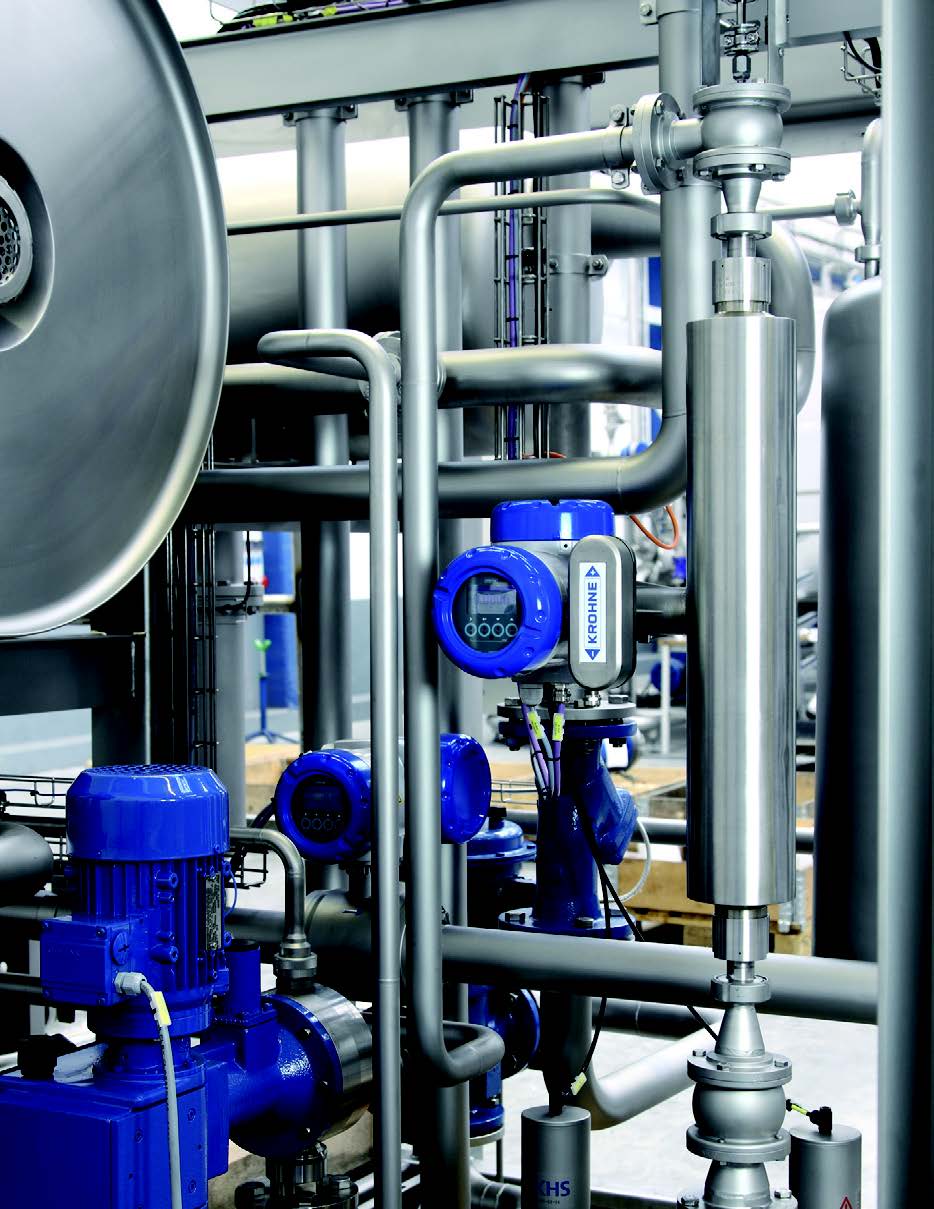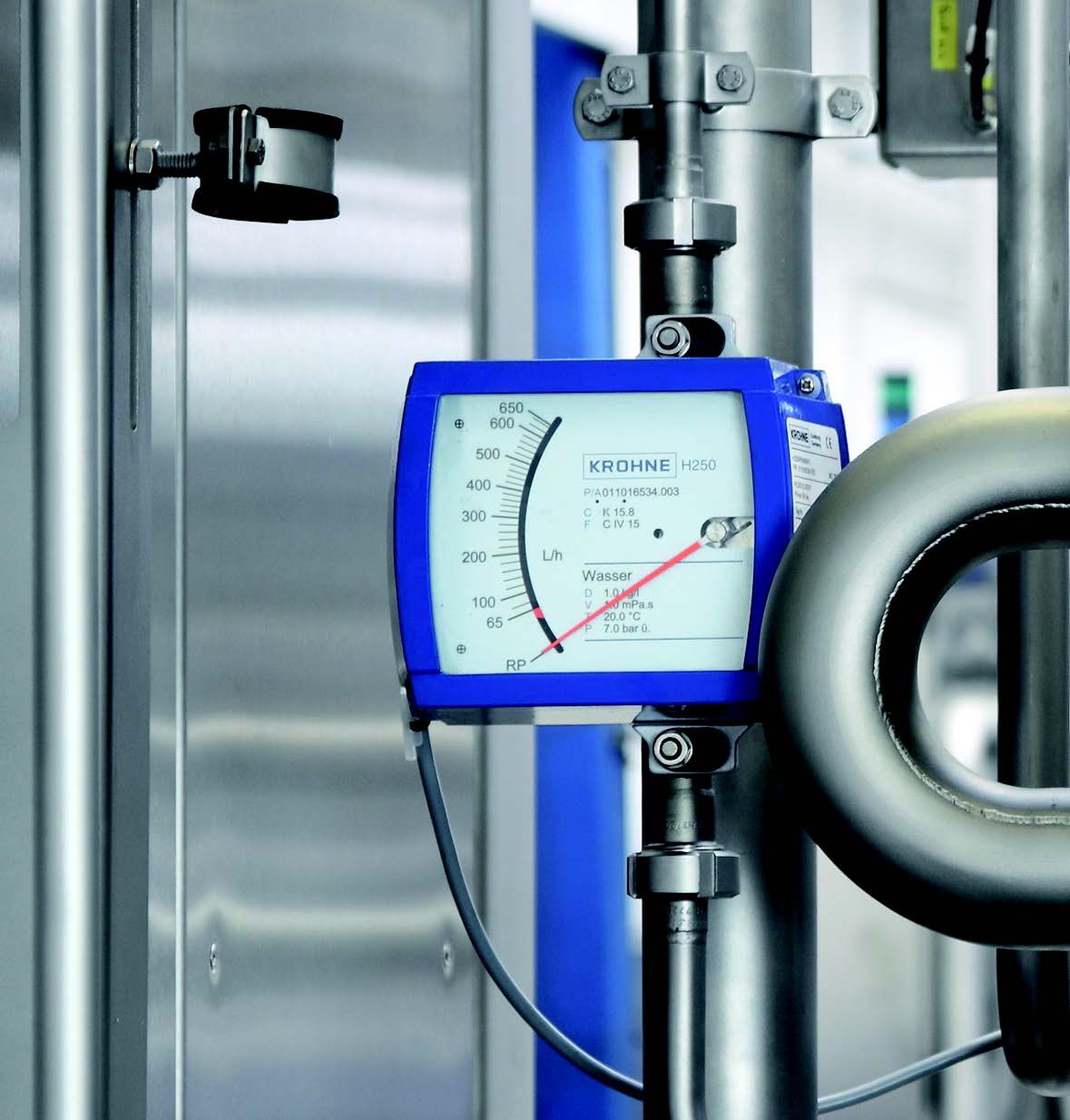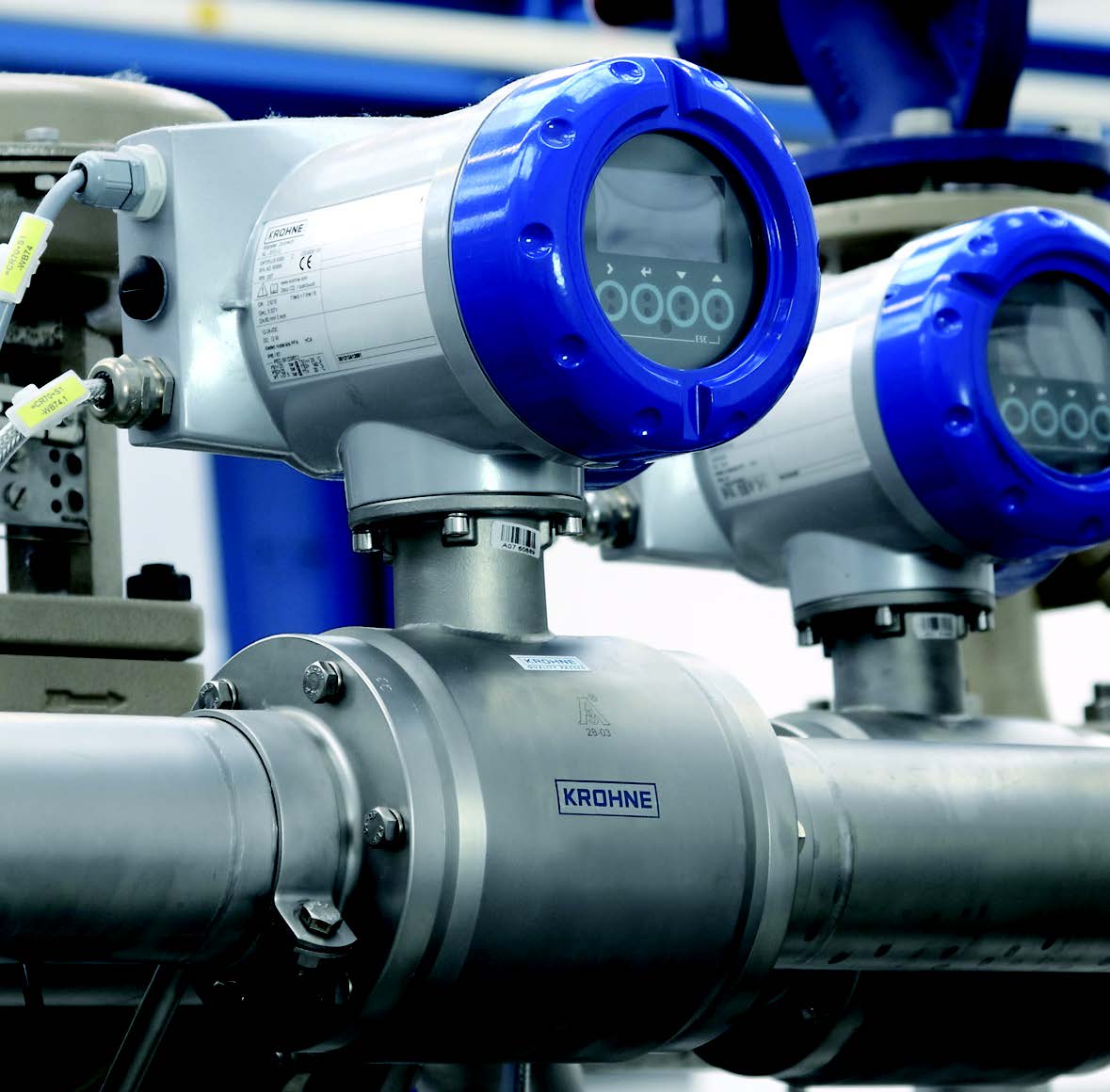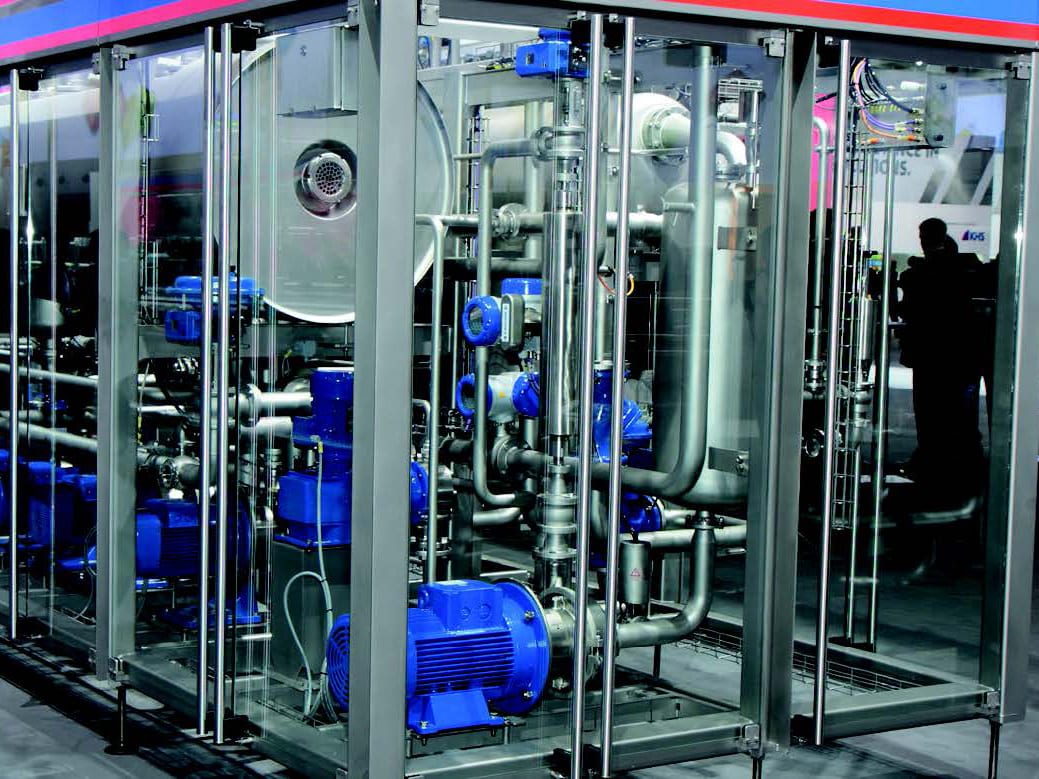Equipping an inline blending system with measurement technology
Application Report | Food & Beverage
- Controlling and monitoring the inline blending processes
- High demands placed on measurement technology used
- Complete solution with standard devices from the one source

Background
KHS AG is one of the world's leading manufacturers of filling and packaging machines as well as process control systems for the food and beverage industry. In addition to components used to fill, clean and package liquids, KHS also supplies the entire range of process technology, including systems for blending syrup.
The KHS Innopro Paramix C is a newly developed, fully-automated blending system featuring horizontal, two-stage vacuum deaeration. It is a flexible system suited to the production of fruit juices, nectars and the carbonation of mineral water. The blending system consists of three components and can be expanded to include a fourth or fifth component if needed. Soft drinks can be blended or re-diluted in a large range. As an option, finished beverages can be supplied, carbonated and / or chilled. Likewise, beer coolers can also be blended and / or chilled.
The finished, carbonated beverage is stored for the interim in a buffer tank injected with CO2. For noncarbonated products, nitrogen or sterile air is used optionally for superposition. The finished product is then supplied to the filling machine and bottled in PET or glass bottles or drink cans.
The KHS Innopro Paramix C belongs to the latest generation of blending systems. The purpose of developing this new generation was to achieve shorter product changeovers while maintaining minimal product loss.
Increased automation and a reduction in the space required also played a role. Thanks to its compact dimensions, the system can be put in a standard marine container and sent to the customer. Its blending capacity is between 6,000 l/h and 72,000 l/h.
Measurement requirements
To ensure a high degree of system automation, the flow rates of the components introduced must be measured at various points. These include:
- Mass flow measurement of syrup concentrate
The measurement of syrup is the most important flow measurement performed in the blending system. On the one hand, syrup is the most expensive beverage element used in production; on the other hand, it has a significant impact on the flavour of the end product. In the past, it was common to measure syrup using an electromagnetic (volume) device but that method should be replaced by mass flow measurement. Mass flow measurement provides greater measuring accuracy when determining the flow rate and it also determines the syrup concentration in °Brix. - Volume flow measurement of non-carbonated mixed product
The quantity of the non-carbonated blended product should be determined prior to carbonation. This measuring point features a sufficiently long, straight inlet distance to enable the use of different types of measuring devices. - Mass flow measurement of CO2 to carbonate the blended product
This measurement helps to ensure a consistent input of CO2 into the liquid. A measuring principle that provides high accuracy regardless of the pressure and temperature of the gas was required. - Visual monitoring of the minimum throughput by way of measuring the CO2 content
As an option, KHS offers CO2 and Brix determination in the blended product as a measurement of quality. However, this measurement requires a minimum flow through the analysis unit used. The flow is then displayed on a measuring device.
The reliable functioning of the measurement technology in the blending system should be guaranteed in each process phase. Particularly during start-up and shut-down of the system, the correct mixing ratio must be precisely maintained in order to keep syrup and water loss to a minimum. This means that the devices used must meet a variety of requirements including easy drainage and a large turndown ratio.
Because of its compact size, the system generally contains no long straight inlet distances. This presents an additional challenge for the measurement technology used. KHS was looking for an appropriate customised solution from the one source if possible.
KROHNE Solution
KROHNE is the standard supplier of measuring devices for KHS and won the contract to equip the inline blending system with measurement technology. The diagram depicts the design of the system with the measuring devices installed. The level measurement depicted in the syrup tank and in the buffer tank is optional and is not taken into account here. The filling equipment is for illustrative purposes only; it is not part of the blending system and is also not considered in this case.
The measuring tasks in the inline blending system were tackled as follows:
An OPTIMASS 7300 Coriolis mass flowmeter is used to measure the highly viscous syrup.
The non-carbonated blended product is measured using an OPTIFLUX 6300 electromagnetic measuring device prior to carbonation.
The quantity of CO2 used to carbonate the blended product is measured using an OPTIMASS 8300 Coriolis mass flowmeter
As an option, KHS offers CO2 and Brix determination in the blended product as a quality measurement. The analysis unit used requires a minimum throughput of liquid. AH 250 variable area flowmeter is used to visually check the minimum flow rate of approx. 300 l/h.
Customer benefits
KROHNE met KHS requirements with standard measuring devices. In addition to the basic demands such as CIP/SIP capability, the selection was made on the basis of the advantages for the individual measuring points. They include:
- Mass flow measurement of syrup concentrate
The OPTIMASS 7300 used features integrated measurement of Brix concentration. This makes it possible to adjust the mass flow and precise syrup concentration prior to dosing. Diluted syrup phases which may occur during product changeover can now be almost completely utilized. There is now no need to discard the water/syrup mixing phases. Instead, they can be blended into the finished drink using the KHS minBrix™ control unit. This results in a reduction in syrup loss and annual savings in excess of 2,200 litres of syrup for this system. The measuring device features a single straight measuring tube without a flow splitter. That means it is easy to clean, there is very minimal pressure loss and is easy to drain. This is a requirement so the system can be offered to end customers who want to frequently change their products. - Volume flow measurement of non-carbonated blended product
The aseptic sealing concept was crucial in selecting the OPTIFLUX 6300. There is an EPDM seal between the aseptic process connection and the flowmeter. It is designed so that when faced with an increased temperature, it does not expand into the measuring tube but rather it expands backwards into an expansion space. This means that no deposits can build up on the seal, endangering the quality of the blended product. Using this seal prevents almost all transfer of aroma from product to product following a changeover. For the end user of the system (beverage producer), the OPTIFLUX 6300 can also take on the role of checking the quality of the blended product. The device features an application and device diagnostics function as standard, enabling it, for example, to display the conductivity of the medium and to output it via the current outputs or bus. The beverage producer is then notified when there is a deviation from the average conductivity expected. A further criterium was the availability of larger nominal sizes: The OPTIFLUX is available in the nominal sizes DN 2.5 to DN 150 with all industry-specific aseptic connections. This means that even with large nominal sizes like DN 125 and DN 150, aseptic measuring devices can be used and the blending system can be equipped with a larger version of the same measuring device without having to switch suppliers. If end customers require even higher accuracy, KHS has ensured that KROHNE also has an alternative for these applications in the form of a mass flowmeter. - Mass flow measurement of the CO2 supplied to carbonate the blended product
At this measuring point, a gas flowmeter that can reliably measure very low gas quantities is required. In the past, thermal mass measuring devices were used but they could not reliably measure if the end customer was using moist gas. For this reason, they were replaced by OPTIMASS 8300 mass flowmeters. The device features two bent measuring tubes with flow splitters (twin tube loop). Thanks to the reduction in the cross section and the resulting increase in the flow velocity of the gas, it can even measure small mass flows of gas. - Visual monitoring of the minimum throughput by way of measuring the CO2 content
A reliably functioning flow indicator was required for this measuring task. The H 250 variable area flowmeter used measures the flow purely mechanically without a power supply and features an easy to read display. This allows for a "fleeting" visual check to ascertain whether the CO2 dosage contains the right amount of gas.










